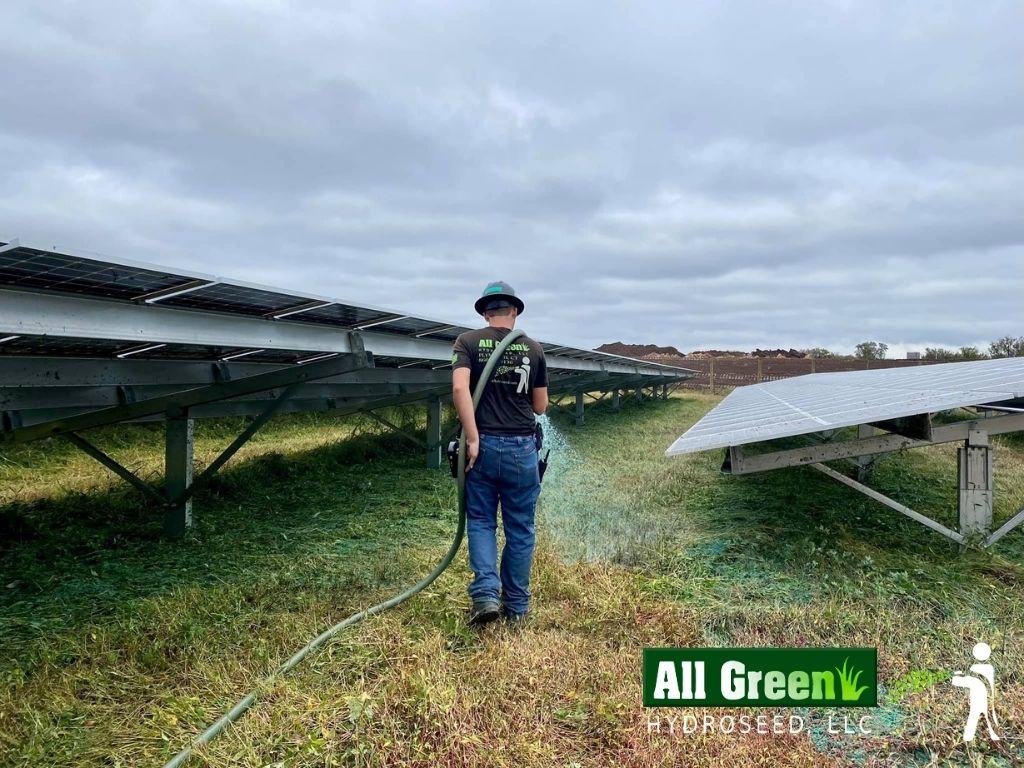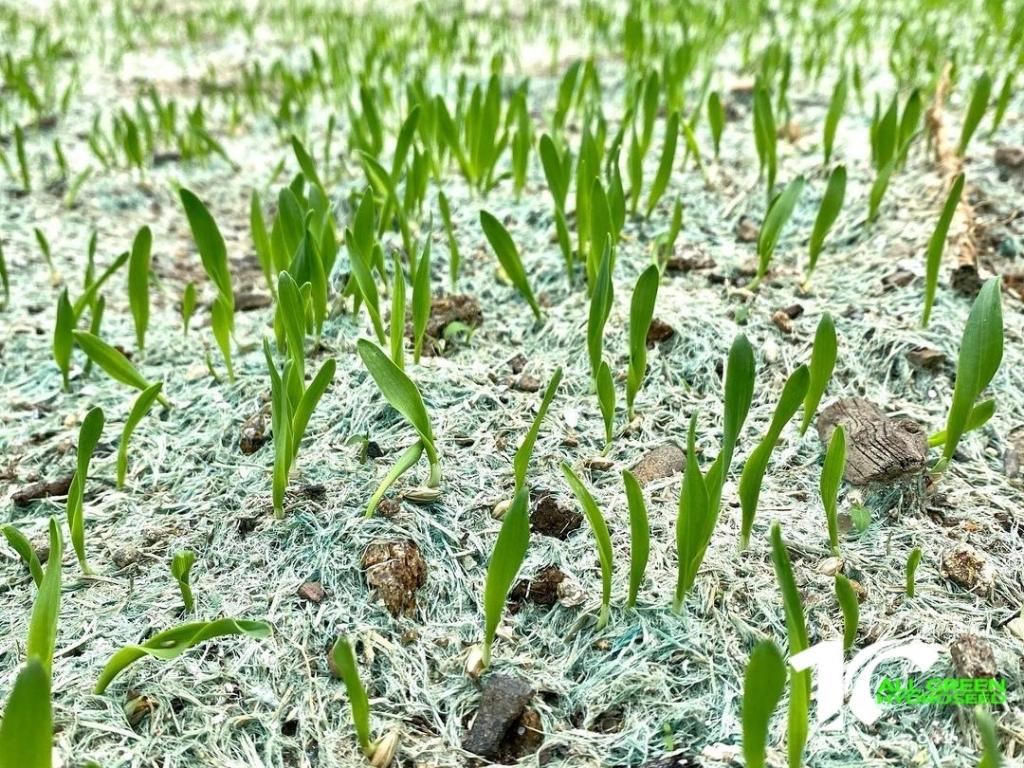Natural disasters such as fires and floods can cause devastating damage to your property and landscape. As a homeowner, you may feel overwhelmed and unsure of how to begin the process of rebuilding and restoring your outdoor space.
Fortunately, this article will explore the benefits of hydroseeding, a cost-effective and efficient solution for landscape restoration. With the help of a reputable hydroseeding CT service provider with years of experience, you can bring your lawns and garden back to life after a fire or flood damage.
Understanding Hydroseeding
Hydroseeding is a process that involves spraying a mixture of water, seeds, mulch, and sometimes fertilizer and soil amendments onto a prepared area. The slurry is applied using specialized equipment, typically a truck or trailer-mounted hydroseeder. This method allows for even distribution of the mixture, ensuring that every part of the landscape is covered with seeds and nutrients, promoting quick germination and growth.
Hydroseeding is a popular choice for landscape restoration because it offers several advantages over traditional seeding methods:
1. Fast Germination And Establishment
The mixture used in hydroseeding provides seeds with the moisture, nutrients, and protection they need for rapid germination. This can lead to faster establishment and growth of vegetation, which is crucial for soil stabilization and preventing erosion after a natural disaster.
2. Cost-effectiveness
Hydroseeding can be more cost-effective than other methods such as sodding, as it requires less labor and material costs. It is especially advantageous for large areas that need to be restored quickly.
3. Customizable Seed Mixtures
With hydroseeding, you have the flexibility to create a custom seed mixture tailored to your specific needs and the characteristics of your landscape. This can help ensure the success of your restoration efforts.
4. Erosion Control
The mulch component in the hydroseeding mixture helps to protect the soil surface from erosion caused by wind and water. This is particularly important after a fire or flood, as the soil is often left vulnerable to further damage.
5. Environmentally Friendly
Hydroseeding is a more sustainable option compared to sodding, as it requires less water and energy to establish the vegetation. Additionally, the mulch in the hydroseeding mixture is often made from recycled materials, reducing its environmental impact.
Restoring Your Landscape After Fire Damage
Fires can cause severe damage to your landscape, including the loss of vegetation and the depletion of nutrients in the soil. In the aftermath of a fire, it’s important to act quickly to restore your landscape and prevent further damage, such as erosion and the invasion of invasive species.
Hydroseeding in CT can help you restore your landscape after a fire by:
1. Providing Erosion Control
After a fire, the soil is often left exposed and vulnerable to erosion. Hydroseeding can help protect the soil by creating a protective layer of mulch and establishing vegetation quickly.
2. Replenishing Soil Nutrients
The hydroseeding mixture can be customized to include soil amendments that help replenish nutrients lost during the fire. This can help promote the growth of healthy, resilient vegetation.
3. Establishing Native Plant Species
Hydroseeding allows you to choose a seed mixture that contains native plant species, which are more likely to thrive in your local environment. Native plants can also help to support local wildlife and ecosystems.
4. Preventing Invasive Species
By establishing vegetation quickly after a fire, hydroseeding can help to prevent the spread of invasive species that may take advantage of the disturbed landscape.
Restoring Your Landscape After Flood Damage
Floods can also wreak havoc on your landscape, causing erosion, soil compaction, and the loss of vegetation. As with fire damage, it’s essential to act quickly to restore your landscape and address any issues caused by the flood. Hydroseeding CT services offer reliable solutions for restoring your landscape after flood damage.
1. Addressing Soil Compaction
-
- Aeration And Soil Amendments
Floodwaters can cause soil compaction, which makes it difficult for plants to take root and grow. To address this issue, hydroseeding services can incorporate soil amendments into the hydroseeding mixture, such as compost or organic matter, to improve soil structure and fertility.
Additionally, the affected area may need to be aerated to alleviate compaction and allow for proper water infiltration and root growth.
2. Establishing Flood-Tolerant Vegetation
-
- Custom Seed Mixtures
After a flood, it’s essential to choose plant species that can tolerate wet conditions and help stabilize the soil. Hydroseeding services can create a custom seed mixture that includes flood-tolerant plant species, ensuring that your landscape will be more resilient to future flooding events.
-
- Faster Establishment
Hydroseeding promotes rapid germination and growth, allowing flood-tolerant vegetation to establish quickly and help mitigate the impacts of future floods.
3. Reestablishing Ecosystem Functions
-
- Supporting Local Wildlife
Restoring your landscape after a flood not only benefits your property but also supports local ecosystems. By choosing native plant species for your hydroseeding mixture, you can provide habitat and food sources for local wildlife.
-
- Improving Water Quality
Healthy, well-established vegetation can help to filter runoff and improve water quality in nearby streams and rivers. Customized seed mixtures of hydroceeding companies can include plant species that are effective at filtering pollutants and sediment, contributing to a healthier environment.
-
- Carbon Sequestration
Establishing vegetation quickly after a flood can help to mitigate the release of carbon dioxide into the atmosphere. Plants absorb carbon dioxide through photosynthesis, and by reestablishing vegetation on your property, you are actively contributing to carbon sequestration efforts.
Benefits of Hydroseeding
Hydroseeding also have multiple benefits, other than bringing dead lawn to life. Here are some of them:
1. Maintaining Soil Health And Stability
Hydroseeding promotes strong root growth by providing an ideal environment for seed germination. A well-developed root system helps stabilize the soil and reduces the risk of erosion after fire or flood damage.
Additionally, the hydroseeding mixture can include soil amendments such as compost or organic matter, which improve soil structure and fertility. A healthy soil structure encourages the growth of beneficial microorganisms that contribute to nutrient cycling and overall soil health.
2. Increasing Property Value And Aesthetics
Hydroseeding allows you to select specific plant species and create a landscape design that suits your personal preferences and the unique features of your property. This level of customization can result in a visually appealing and functional outdoor space.
A well-maintained landscape can significantly increase the curb appeal and value of your property. Hydroseeding CT services can help you restore your damaged landscape quickly, ensuring that your property looks its best and attracts potential buyers.
3. Promoting Biodiversity And Ecological Resilience
Hydroseeding with native plant species can help create diverse habitats that support various forms of wildlife, from birds and insects to small mammals. A biodiverse landscape is more resilient to environmental changes and disturbances, such as fires and floods.
Moreover, many native plant species included in hydroseeding mixtures are important sources of nectar and pollen for pollinators like bees, butterflies, and hummingbirds. By restoring your landscape with hydroseeding, you can contribute to the conservation of these crucial species and the ecosystems they support.
4. Reducing the Impact of Future Disasters
Hydroseeding services can help you create a fire-resistant landscape by selecting plant species with low flammability and incorporating firebreaks into the design. This can reduce the risk of fire spreading to your property and minimize potential damage.
Similarly, by choosing flood-tolerant plant species and designing your landscape to improve drainage, hydroseeding can help reduce the impact of future flooding events. Properly designed landscapes can slow down and absorb excess water, protecting your property from damage.
5. Streamlining The Restoration Process
Hydroseeding is a quicker method of landscape restoration compared to other techniques like hand-seeding or sodding. The specialized equipment used in hydroseeding allows for efficient and even distribution of the seed mixture, speeding up the restoration process.
Also, hydroseeding requires fewer labor resources than other restoration methods, as the application process is largely mechanized. This can result in cost savings and a faster project completion time.
6. Preventing Soil Erosion and Sedimentation
Hydroseeding is an effective solution for stabilizing slopes and preventing erosion on your property. The fast establishment of vegetation and the protective layer of mulch work together to hold the soil in place and reduce the risk of landslides or soil displacement.
Erosion after a fire or flood can lead to sedimentation in nearby water bodies, affecting water quality and aquatic ecosystems. By quickly establishing vegetation through hydroseeding, you can minimize sediment runoff and protect the surrounding environment.
7. Enhancing Landscape Functionality
A well-designed landscape can provide a range of valuable ecosystem services, such as air and water purification, temperature regulation, and noise reduction. Hydroseeding CT services can help you create a functional landscape that delivers these benefits while also being visually appealing.
More importantly, properly designed and restored landscapes can contribute to effective stormwater management by slowing down and filtering runoff. Hydroseeding can help you establish vegetation that aids in stormwater management, reducing the risk of flooding and improving water quality.
8. Adapting to Climate Change
Climate change can lead to increased frequency and severity of droughts, making it essential to choose plant species that can tolerate these conditions. Hydroseeding can create custom seed mixtures that include drought-tolerant species, helping your landscape adapt to changing climate conditions.
Urban areas are often subject to the heat island effect, where temperatures are higher due to human activities and infrastructure. Hydroseeding can help you establish vegetation that provides shade and reduces surface temperatures, mitigating the heat island effect and making your outdoor space more comfortable.
Takeaway
Hydroseeding offers a highly effective and efficient method for restoring your landscape after fire or flood damage. By providing rapid establishment of vegetation, erosion control, and customizable seed mixtures tailored to your property’s specific needs, hydroseeding can help you create a resilient and beautiful outdoor space. When selecting a hydroseeding company, consider All Green Hydroseed as a reliable and experienced option to handle your landscape restoration project. Their expertise in hydroseeding and commitment to customer satisfaction will ensure that your property is in good hands, and your landscape will flourish once again.



